Removal Procedure
- Disconnect the negative battery terminal.
- Drain the engine coolant. The drains are located at the right front corner of the engine block and right-hand side of the radiator.
- Remove the air inlet tube and air filter cover, disconnecting the fresh air hose at cam cover.
- Remove the PCV valve hose.
- Relieve the pressure in the fuel system at the fuel pressure test port. Refer to Relieving Fuel Pressure.
- Remove the bolt at the fuel line clip and disconnect the fuel line from the rail.
- Disconnect the throttle cable from the throttle body.
- Remove the throttle cable bracket assembly and cable.
- Remove the following electrical connectors and harness wiring:
- Disconnect heater and deaeration hoses at intake manifold outlets.
- Lay the harness over the brake master cylinder.
- Remove the intake manifold support bracket bolt attached to the intake manifold located next to the master cylinder.
- Remove the accessory drive belt.
- Remove the power steering pump assembly with the support bracket. Remove the upper power steering pump bracket attachment bolts and position the pump next to the right-hand front of the dash panel, away from the cylinder head and intake manifold. Remove the lower power steering pump support bracket brace. Refer to Engine Drive Belt and Accessories.
- Remove the 3 upper intake manifold attachment nuts.
- Raise the vehicle squarely on a hoist. Refer to the lift instructions for positioning the vehicle on the hoist.
- Remove the lower power steering unit support bracket.
- Remove the intake manifold support bracket bolt attached to the intake manifold and located next to the generator. Loosen the lower bracket bolt and rotate the bracket out of the way.
- Disconnect the vacuum hose at the EVAP canister purge solenoid and brake booster.
- Remove the intake manifold attaching stud.
- Remove the intake manifold assembly.
- Remove the intake manifold gasket and discard. Clean the cylinder head and intake manifold gasket sealing surfaces. Inspect the surfaces as outlines in the DOHC (LL0) Cylinder Head section.

Caution: Do not allow smoking or the use of open flames in the area where work on the fuel or EVAP system is taking place. Anytime work is being done on the fuel system, disconnect the negative battery cable, except for those tests where battery voltage is required.
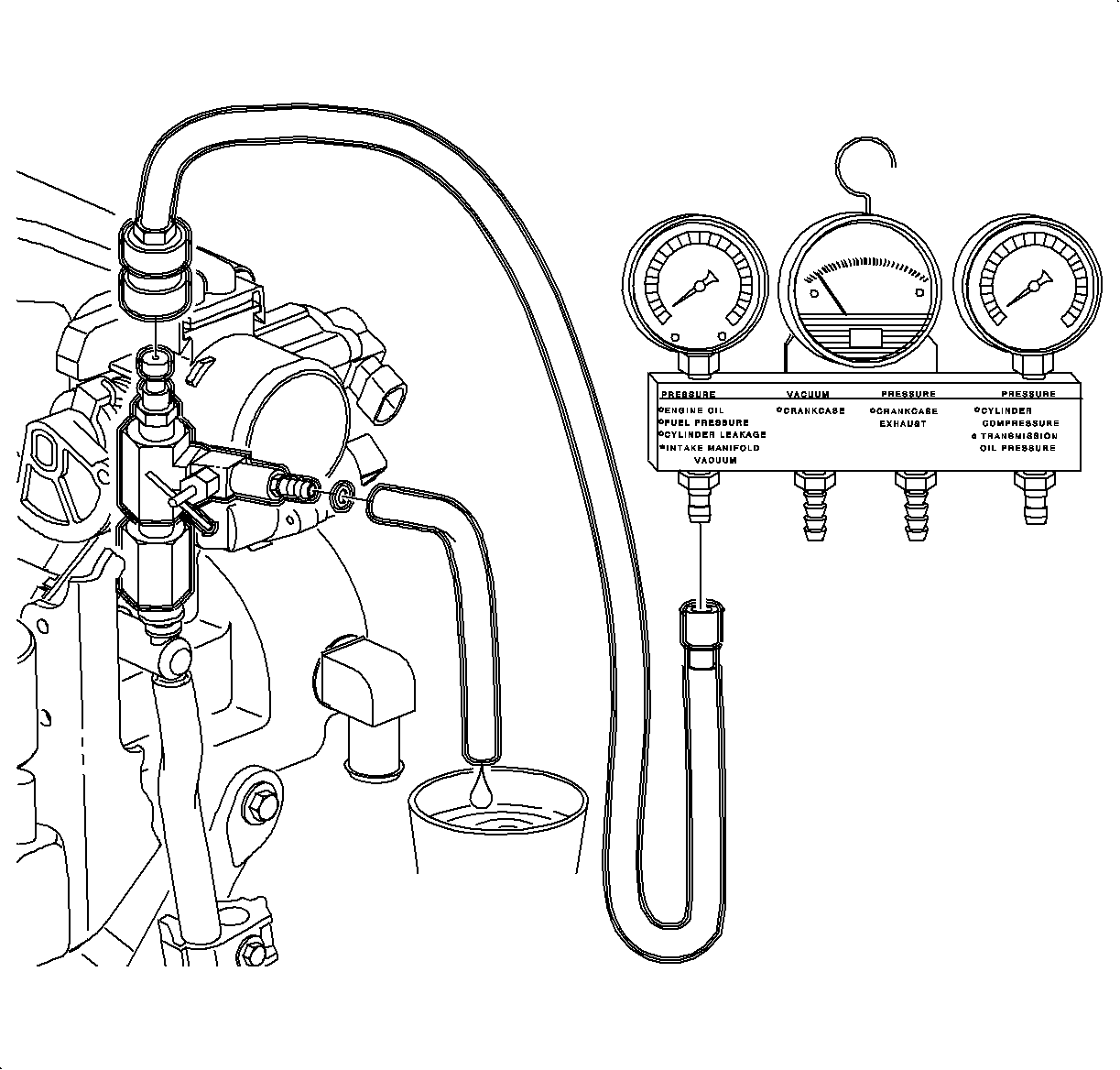
Caution: Whenever fuel line fittings are loosened or disconnected, wrap a shop cloth around the fitting to collect fuel. Place the cloth in an approved container.

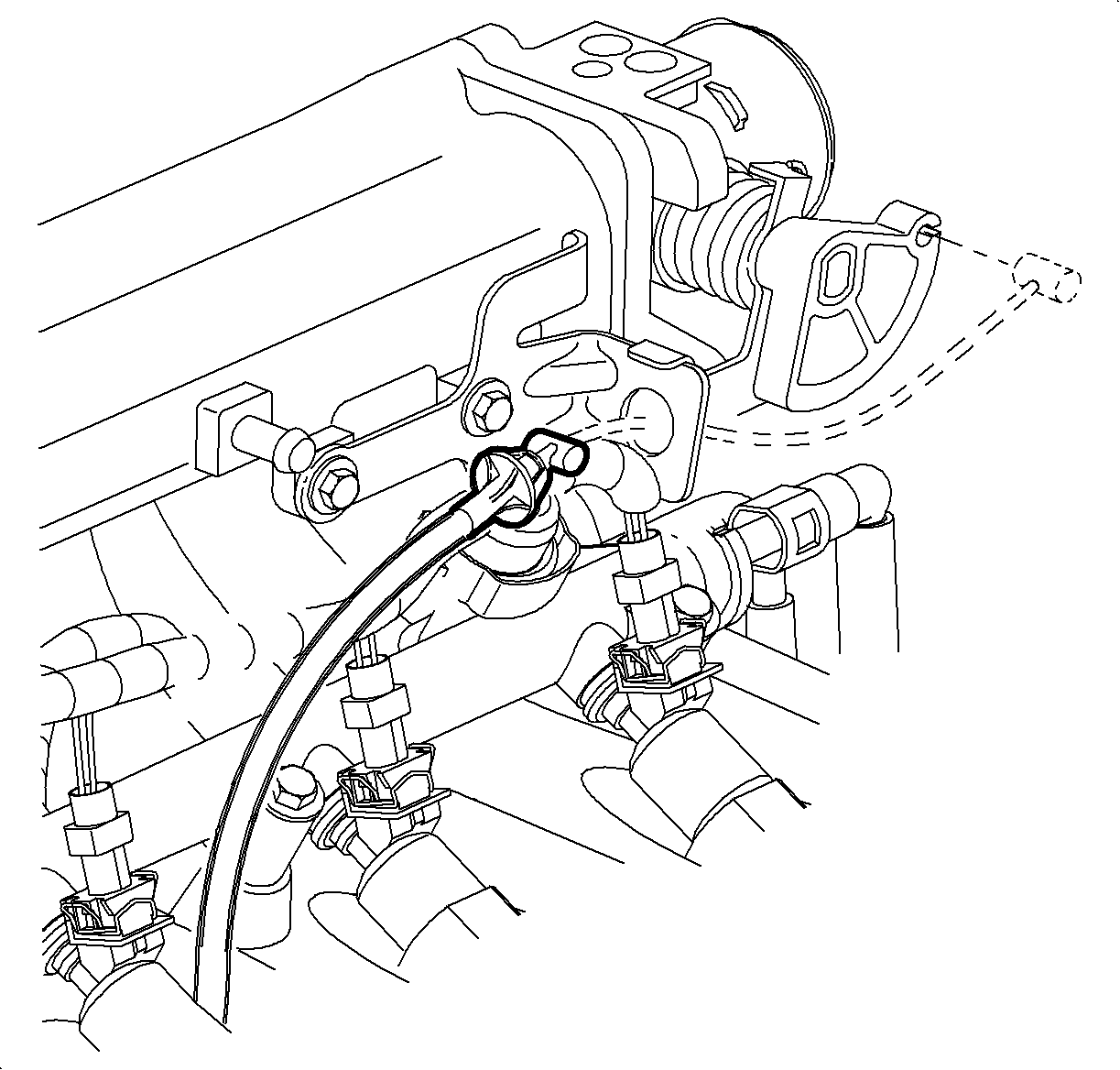
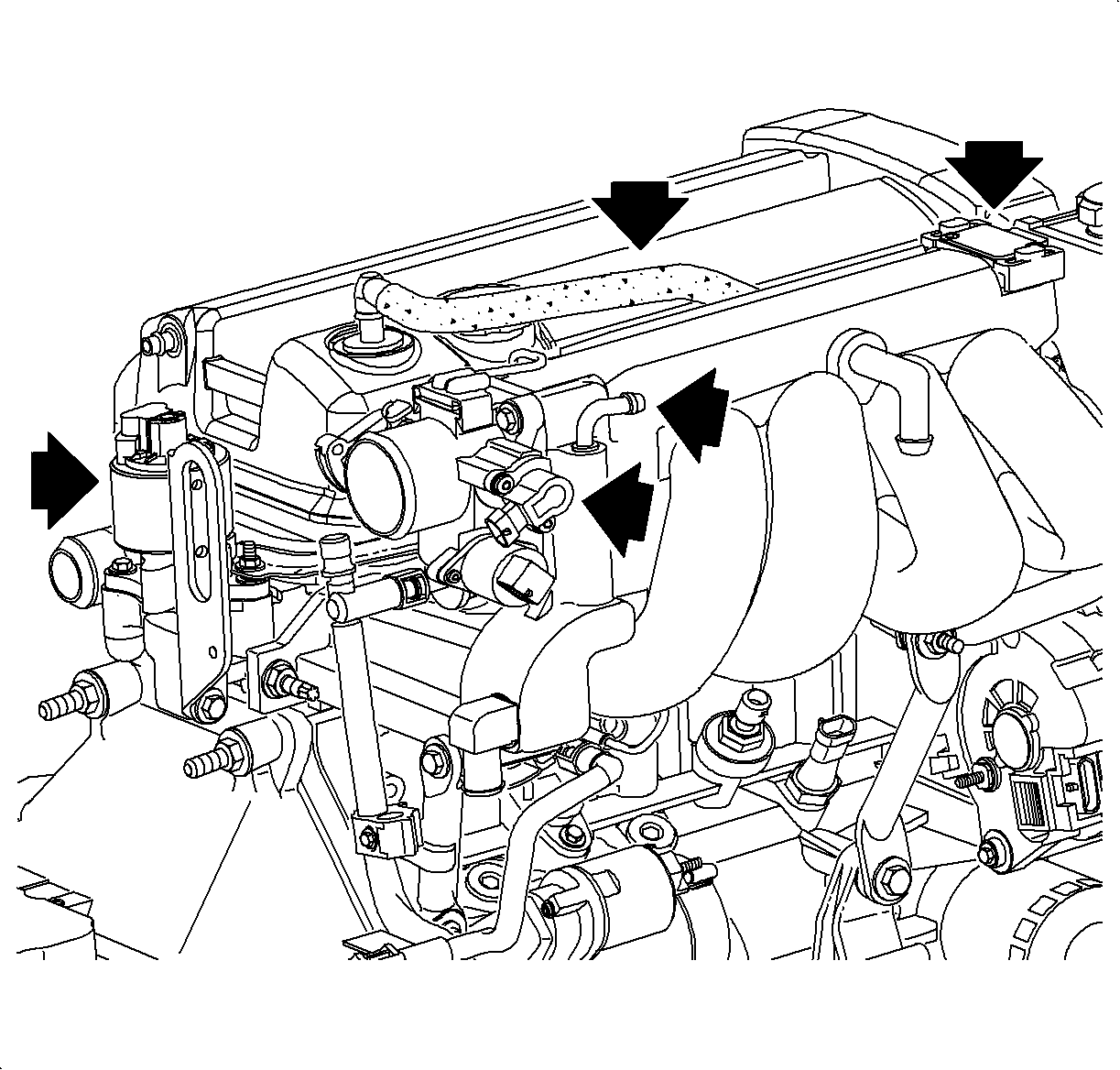
| • | Fuel injectors |
| • | Throttle position sensor |
| • | Idle air control valve (IAC) |
| • | Manifold absolute pressure (MAP) sensor |
| • | EGR valve |
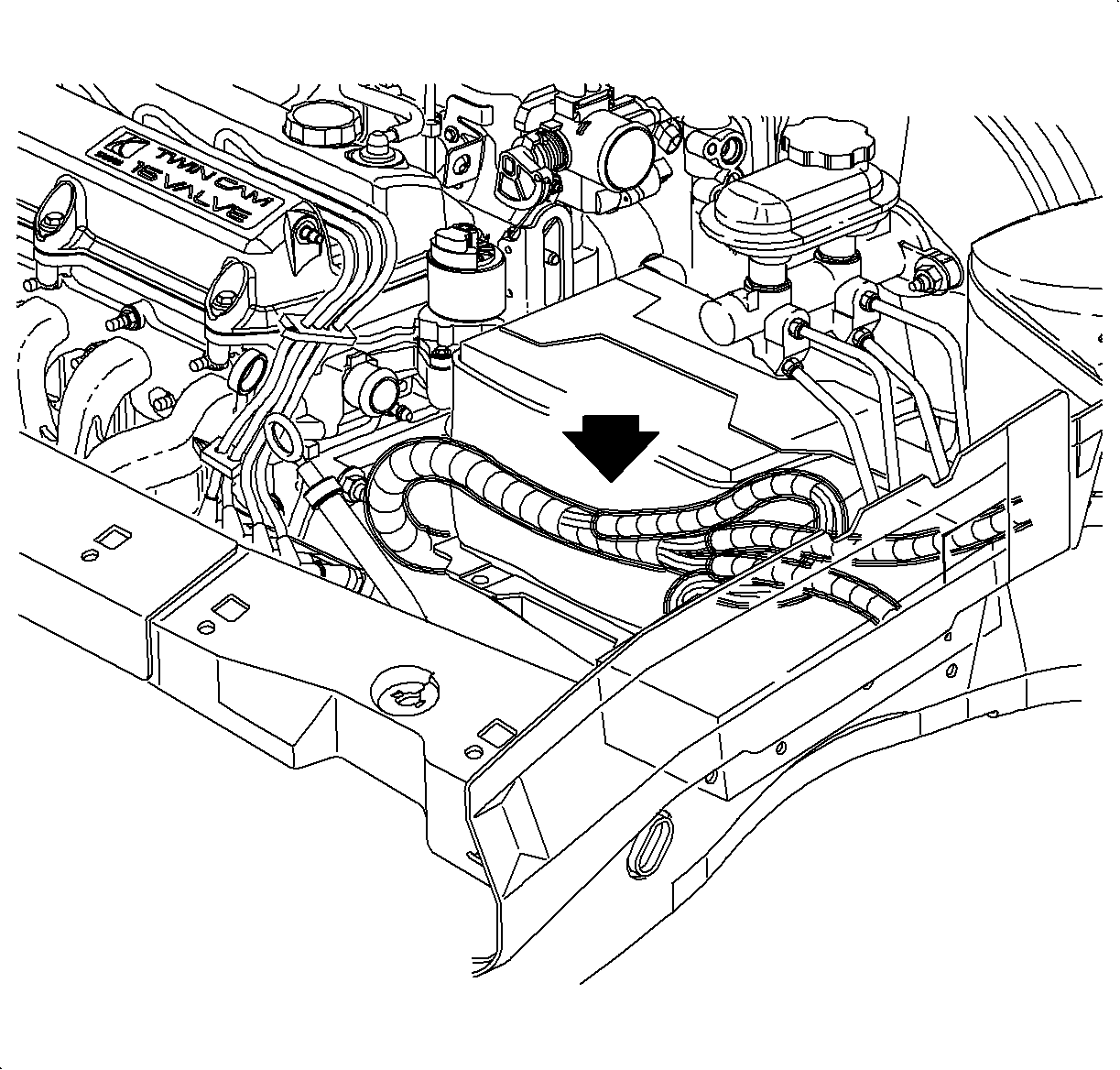
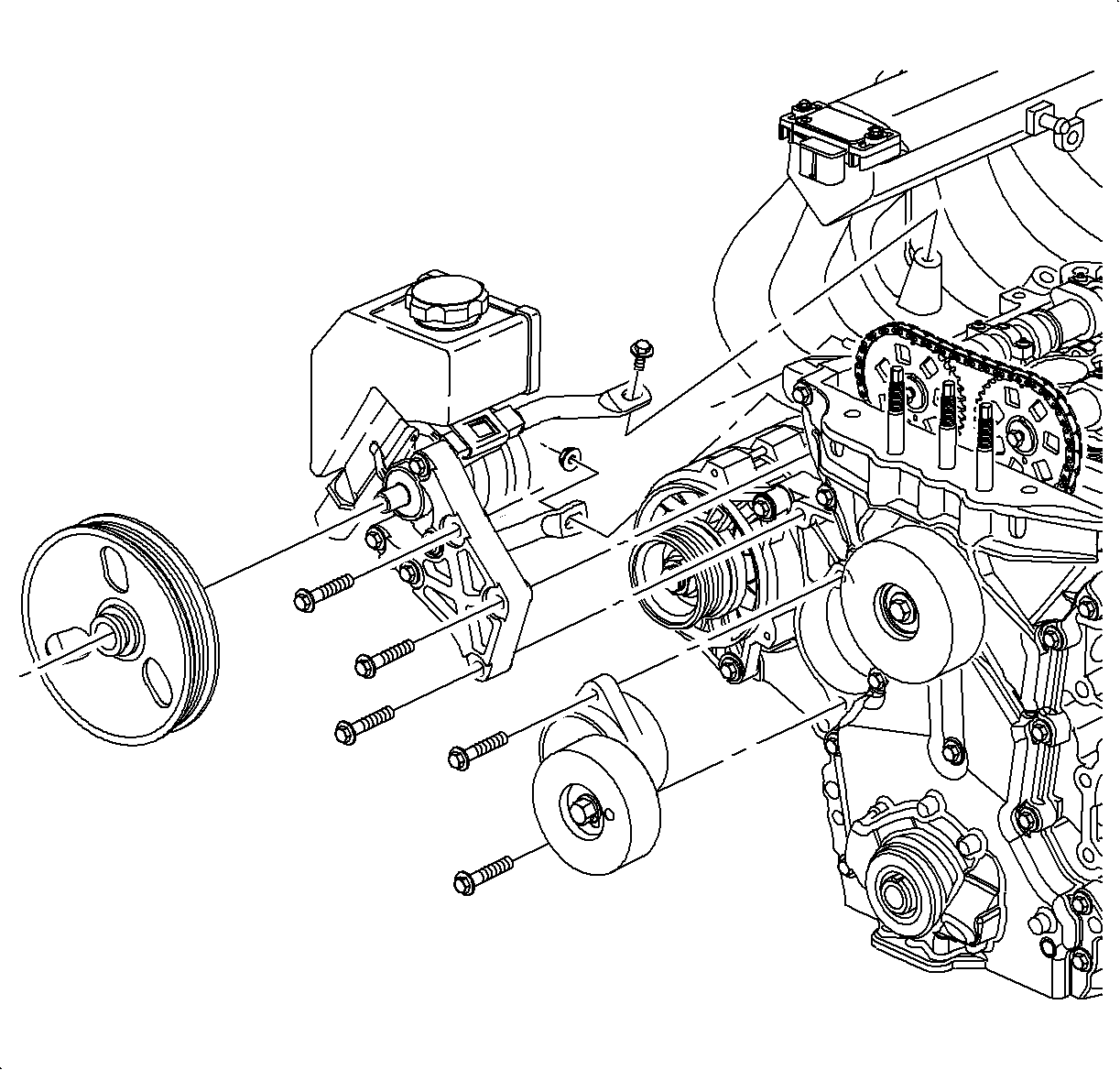
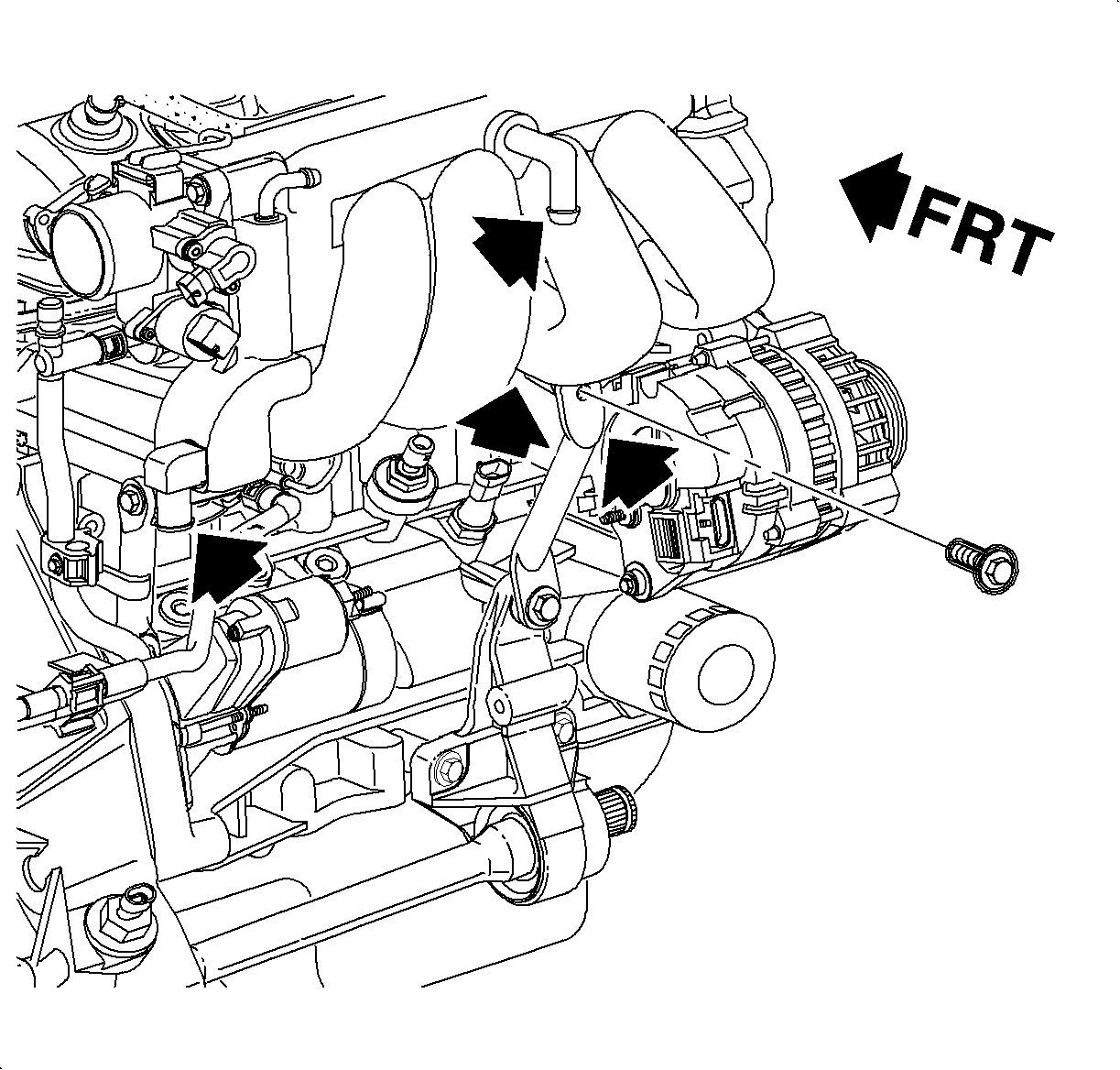
Caution: Ensure that the vehicle is properly supported and squarely positioned. To help avoid personal injury when a vehicle is on a hoist, provide additional support for the vehicle on the opposite end from which the components are being removed.
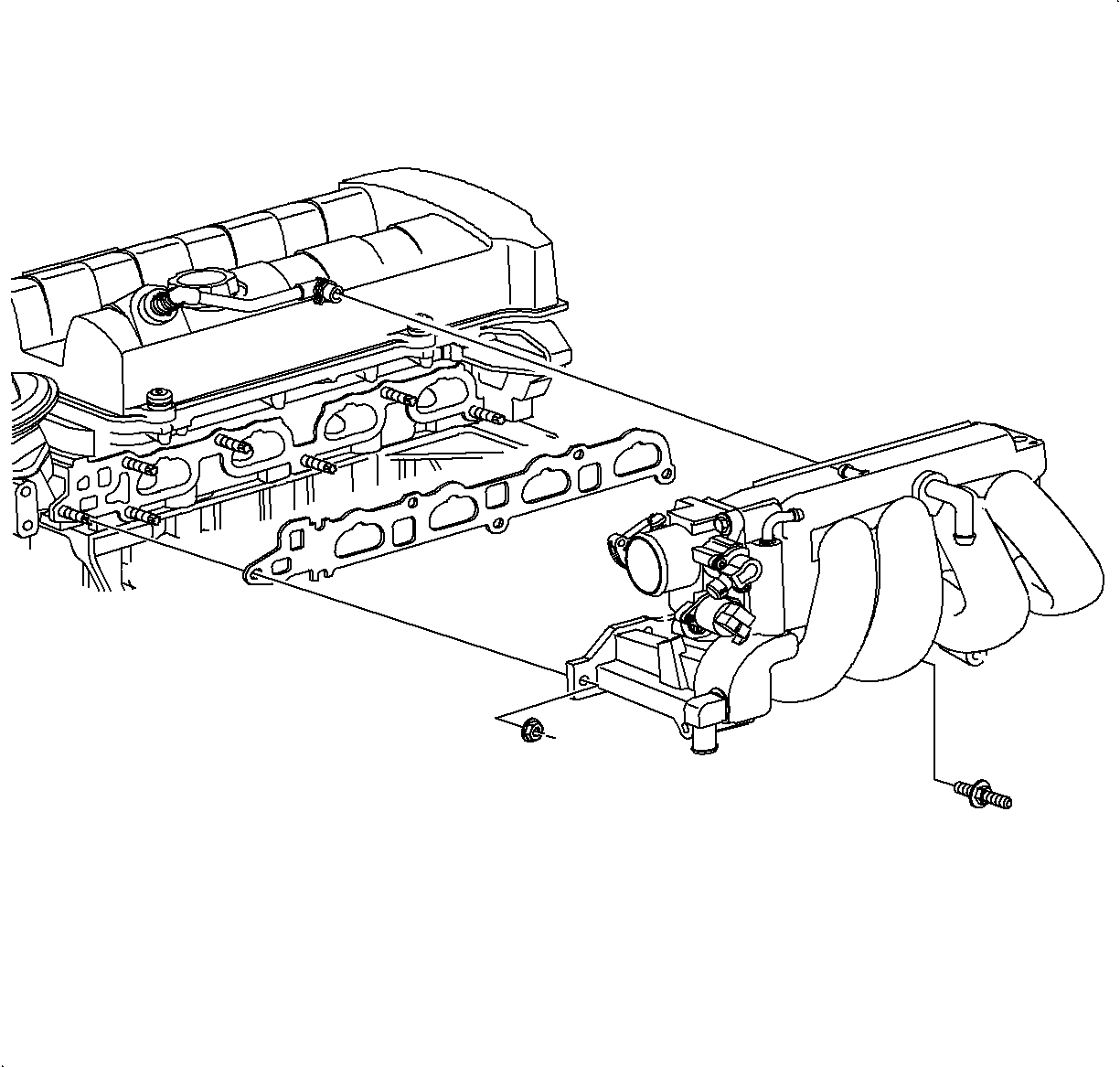
Lower the vehicle to the floor.
Installation Procedure
- Install the new intake manifold gasket.
- Install the intake manifold onto the attaching studs.
- Install the intake manifold attaching nuts.
- In sequence, torque the intake manifold attaching nuts.
- Install the power steering pump assembly and brackets. Refer to Engine Drive Belt and Accessories.
- Install the accessory drive belt. Make sure the belt is properly aligned on the pulleys.
- Connect the heater and deaeration hoses to intake manifold outlets.
- Install the intake manifold support brackets.
- Connect the fuel supply line to the fuel rail. Install the fuel line clip bolt.
- Connect the throttle cable to throttle body, and throttle cable support bracket. Attach the accelerator control cable bracket.
- Install the following electrical harness connectors and vacuum hoses:
- Install the PCV valve hose.
- Install the air inlet tube and air filter cover connecting the fresh air hose at the cam cover. Refer to Air Induction System.
- Connect the negative battery terminal.
- With the engine OFF and the ignition ON, pressurize the fuel system and check for fuel leaks.
- Install the cylinder block drain plugs and close the radiator drain.
- Fill with coolant. Use only a non-phosphate ethylene glycol-based antifreeze.
- Prime the fuel system.
- Start the engine and check for leaks.
- Fill the cooling system surge bottle to the cold full line. Check the coolant level after the engine has run for 2-3 minutes.
Important: Make sure the cylinder head and intake manifold gasket sealing surfaces are clean. Refer to the DOHC (LL0) Cylinder Head section for inspection requirements. Use Saturn P/N 21485276 LOCTITE® 290 or equivalent, to seal a new coolant deaeration tube elbow into the manifold necessary.
Tighten
Tighten the nuts to 30 N·m (22 lb ft)
in the following sequence: 7, 5, 4, 2, 1, 3, 6.
Tighten
Tighten the brackets to 38 N·m (28 lb ft).
Tighten
Tighten the R/H to block to 55 N·m
(41 lb ft).
Tighten
Tighten the L/H to block to 30 N·m
(22 lb ft).
Tighten
Tighten the support brackets-to-intake manifold
to 30 N·m (22 lb ft).
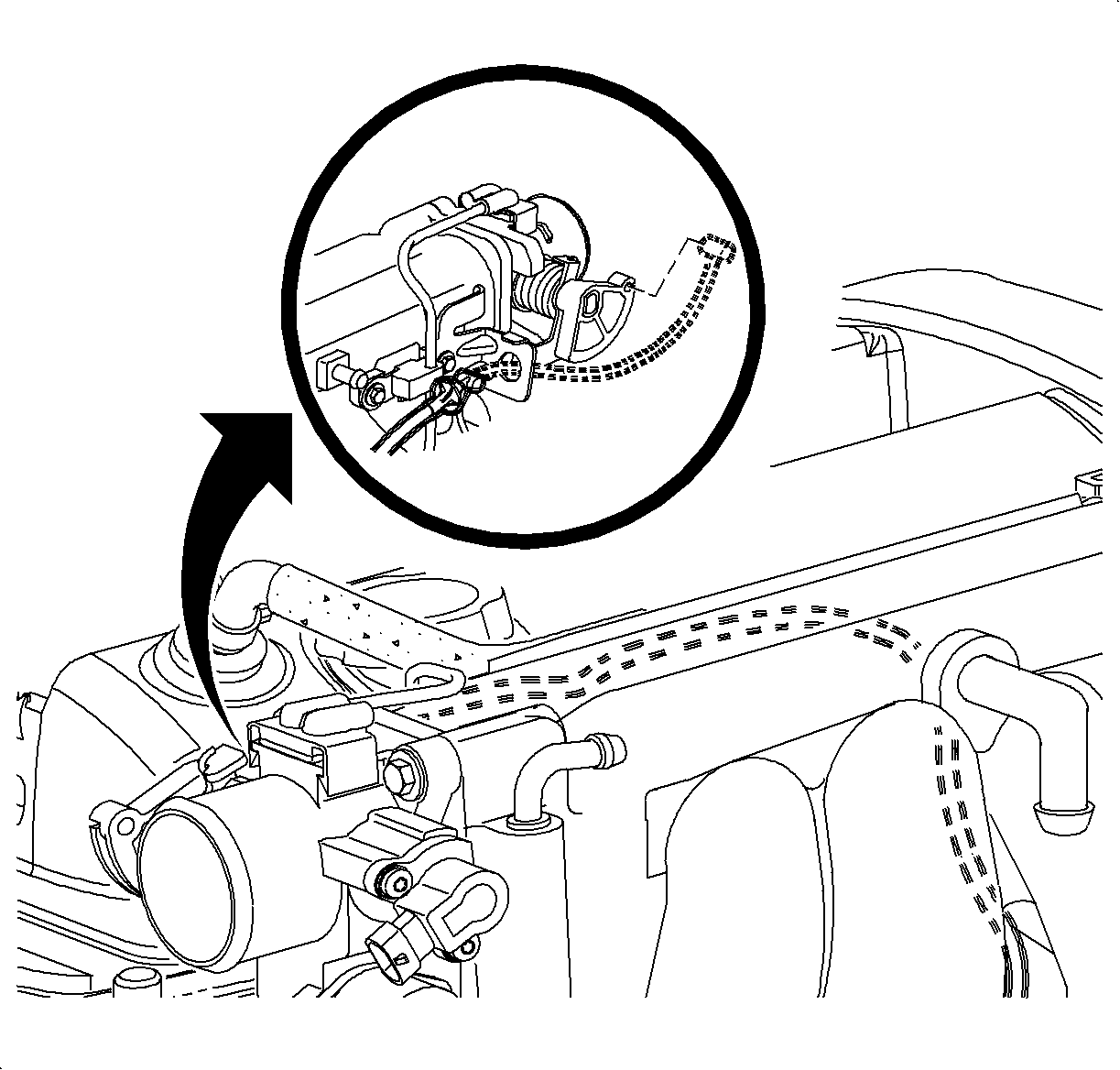
Caution: Whenever fuel line connects are disconnected, lubricate steel line male ends with clean engine oil. Holding the steel line, firmly press on the female connector until a click is heard, then pull back to confirm engagement. Make sure the fuel line connects are fully seated. Pinched, kinked, or damaged fuel lines must be replaced.
Tighten
Tighten the bolt to 4 N·m (36 lb in).
Important: When the throttle cable is removed, make sure the locking tangs are fully engaged when assembled if disconnected.
Tighten
Tighten the bracket to 25 N·m (19 lb ft).
Important: Make sure to confirm positive engagement of electrical connectors and vacuum hoses.
| • | Electrical connectors |
| - | Idle air control (IAC) |
| - | Throttle position (TP) sensor |
| - | Manifold absolute pressure (MAP) sensor |
| - | Fuel injectors (4) |
| - | EGR valve |
| • | Vacuum hoses |
| • | EVAP canister purge solenoid |

Tighten
Tighten the plugs to 35 N·m (26 lb ft).
Important: The vehicle must be level when filling with coolant.
| 18.1. | Cycle the ignition ON for 5 seconds and then OFF for 10 seconds. |
| 18.2. | Repeat step 18.1 twice. |
| 18.3. | Crank the engine until it starts. The maximum starter motor cranking time is 20 seconds. |
| 18.4. | If the engine does not start, repeat steps 18.1-18.3. |
